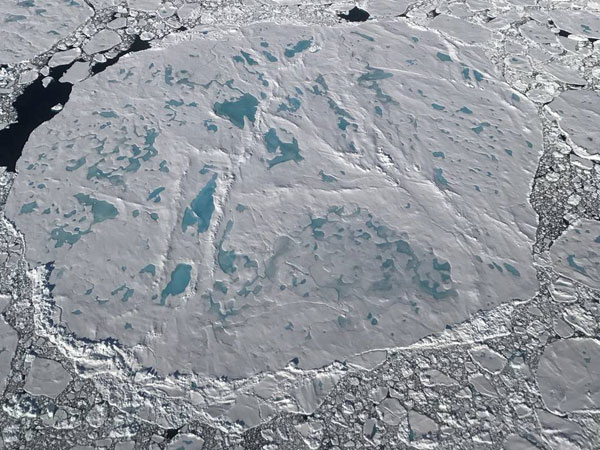
A large circular sea ice floe covered with melt ponds and surrounded by smaller floes, as seen from an Operation IceBridge flight on July 17, 2017.
NASA/Nathan Kurtz
One of NASA’s key goals is to observe and explore our solar system — and beyond. But a key part to understanding how other celestial bodies might support life is to understand what’s happening on a pale blue dot orbiting a yellow star in the Orion spur of our galaxy — a planet we call home.
While NASA launches myriad spacecraft to study objects beyond Earth, it also supports several missions that study our own planet. In this episode, Michelle Thaller visits with two key members of NASA’s Operation IceBridge: Christy Hansen, Airborne Sciences Manager at NASA’s Goddard Space Flight Center, and Joe MacGregor, Deputy Project Scientist for Operation IceBridge.
Join Thaller as she learns about the IceBridge mission, the tools it is using to study Earth’s polar ice sheets, and the scientific discoveries it is making. How many ice sheets does Earth have? What impact will a recently calved iceberg the size of Delaware have on Antarctica’s the West Antarctic ice sheet? Why did Navy pilots using radar altimeters think they were further above the ground than they actually were? How many tons of ice are melting every second? How high will the sea level rise by the end of the century? What effect does melting ice have on the ocean’s temperature? What does Antarctica look like under all that ice?
Hear the answers and more in the latest installment of Orbital Path.
Orbital Path is produced by PRX and supported by the Alfred P. Sloan Foundation. Don't miss PRX's other science podcasts: Transistor and Outside Magazine.
 0
0
Comments
You must be logged in to post a comment.